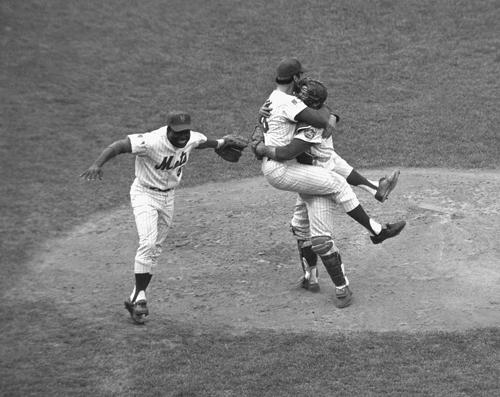Another memento from Shea Stadium

October 8, 2008
NEW YORK — Now that Shea Stadium is closed for business, New York Mets fans are able to buy mementos from the venue that housed the 1969 “Miracle Mets” and an improbable 1986 World Series comeback.
Shea had a rich musical history, too, and one of those memories is now for sale: a recording of the Clash’s concert there on Oct. 13, 1982, as opening act for The Who.
It was arguably the Clash at its peak. The band had a few radio hits by then, like “Rock the Casbah,” “Train in Vain” and “Should I Stay or Should I Go,” and each was hauled out to impress a stadium-sized audience, most of them fans of the headliners.
Shea was the birthplace of stadium rock ‘n’ roll when the Beatles performed there in 1965. Bruce Springsteen, the Rolling Stones, the Police and others came later. Billy Joel closed it for concerts this summer – bringing out Paul McCartney to sing “Let it Be” for the last tune.
“Right away when we heard we were going to play there we thought about the Beatles at Shea,” guitarist Mick Jones recalled recently. “Everybody knew about it.”
Get The Daily Illini in your inbox!
The Who and the Clash were a culture clash double bill. The Who was one of the titans of 1960s British rock who became more bombastic as they aged, while the Clash were young punks trying to crash the party. Both bands had big New York followings, but they were like Republican and Democrat, conservative and liberal.
The Clash had their share of fans who came to Shea that night but left before the headliner could come on.
Clash bassist Paul Simonon recalled The Who’s Pete Townshend coming into the dressing room to kick a soccer ball around, but Roger Daltrey “wouldn’t talk to us.”
Jones is more gracious in his memory, saying he “adored” The Who and was honored to play on the same bill.
“There was a certain element of passing on the baton,” he said. “They were on one of their farewell tours and we were an up-and-coming group. We came from the same area of London so we felt there was some kind of a bond. That was probably why we were asked to do it.”
He had the farewell tour part right; just the wrong band. The Clash was soon to kick Jones out of the band, which essentially doomed them.
Jones can’t recall why the show was recorded that night, probably because the band was making a video (The video of “Should I Stay or Should I Go” showed the Clash riding an open-topped car from Manhattan to Shea Stadium in Queens, then bursting on to the stage).
The tight 14-song set, with a reprise of “The Magnificent Seven,” was chosen to highlight the band’s best-known songs, with no filler.
“I like the idea that you can hear the four individuals and what they were doing and it gels together as a kind of magic,” he said.
Jones said the band wasn’t intimidated by the size of a 57,000-seat venue with a backstage area larger than some of the clubs they were used to playing.
“We liked to think we could play anywhere and rock the house,” he said.
Another memory of the gig? Being cold. It was October, and Joe Strummer made frequent references to rain while speaking to the audience.
The Clash had released another live album, although unlike “The Clash Live at Shea Stadium,” it didn’t document a single show. The tapes for this one were located by the late Strummer as he was packing for a move.
Jones was asked whether there was any other unheard material hiding in a vault.
“It depends on whether any of us move,” he said.






